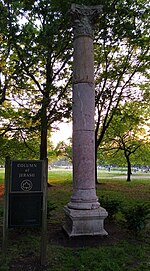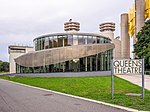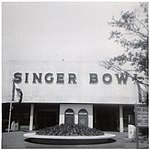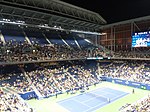Rocket Thrower
1963 sculptures1964 New York World's FairBronze sculptures in New York CityBuildings and structures in Queens, New YorkFlushing Meadows–Corona Park ... and 8 more
New York Hall of ScienceNude sculptures in New York (state)Outdoor sculptures in New York CityRocket sculpturesSculptures of men in New York CityStatues in New York CityUse American English from August 2014Use mdy dates from August 2014

Rocket Thrower is a 1963 bronze sculpture by American sculptor Donald De Lue. Created for the 1964 New York World's Fair, it is located in Flushing Meadows–Corona Park in Queens, New York City. De Lue was among a total of five sculptors who would create pieces for the fairground. He was contracted in 1962 for the amount of $105,000 with a deadline for completion of under six months. De Lue completed a full plaster model in 1963 at which time it was sent to Italy to be cast.
Excerpt from the Wikipedia article Rocket Thrower (License: CC BY-SA 3.0, Authors, Images).Rocket Thrower
United Nations Avenue South, New York Queens
Geographical coordinates (GPS) Address External links Nearby Places Show on map
Geographical coordinates (GPS)
| Latitude | Longitude |
|---|---|
| N 40.7474 ° | E -73.8421 ° |
Address
Rocket Thrower
United Nations Avenue South
11368 New York, Queens
New York, United States
Open on Google Maps











